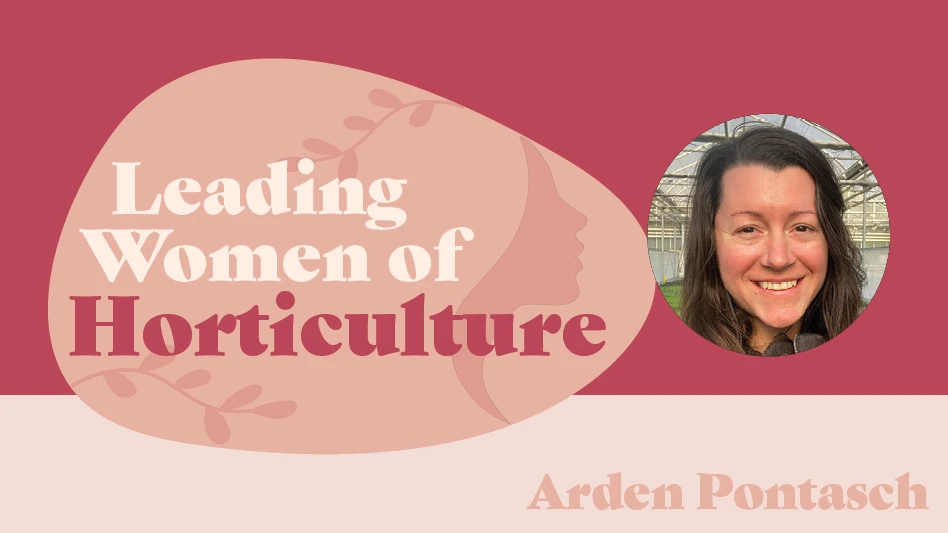
Customer communication is crucial when it comes to developing new products and treatment programs. And Heidi Warner, Nufarm’s new U.S. Ornamental Segment Lead, has logged countless miles to visit personally with growers and learn their pressure points. These weekly onsite visits help funnel new products and active ingredients through distribution and to the grower.

“We take great pleasure in helping growers come up with solutions or create a preventative program to reduce those stresses,” Warner says.
In her role as U.S. Ornamental Segment Lead, she helps with forecasting new products, and she works closely with the sales and marketing teams to help grow the Nufarm portfolio. And there are some exciting products in the pipeline for the ornamental space, she says.
“Nufarm is working on products for the entire green industry,” she explains. “We’re currently working on two fungicide products and we’re in the process of narrowing down what our next insecticide addition may be. There are a lot of fun and exciting things going on at Nufarm.”
They recently enhanced their miticide rotation program and added Engulf GHN miticide, which was launched last summer. It features a higher concentration of bifenazate and provides easier mixing, storage efficiency, and low-use rates resulting in lower residue.
“We now have three great products that control all types and life stages of mites,” she adds.
Expert advice
Warner grew up in the green industry, which provides an extra layer of familiarity and understanding when she’s consulting with growers. Her parents grew produce in the field and bedding plants in the greenhouse, both for wholesale markets. She also studied plant and soil science at West Virginia University.
This year, growers had some interesting observations about particular pests and how spring weather has affected some crops.
“In the Northeast, growers are seeing spotted lanternfly, which will continue to spread to other areas,” she says. “And the red headed flea beetle is a major pest for many nurseries. There is a wide range of soil and foliar treatments that can be utilized to achieve effective control of this pest.”
Insecticides registered for use include imidacloprid Mallet 2F T&O or Mallet 0.5G, Dinotefuran Safari 20 SG, Acetamiprid TriStar, Bifenthrin, and Tame, she explains.
The cool and wet spring weather conditions created some challenges for growers in several areas.
“We’ve received a lot of calls from nurseries with concerns about the weather, which put them behind in terms of spray applications for disease or insect control and asking if they could combine active ingredients or if they could skip an application, for example,” she says. “Cool weather may mask some diseases early on, especially with root pathogens. And now we’re getting hot and dry weather and seeing more disease and insect pressure as the plants become more stressed. Mites usually become a problem when it’s hot and dry, too.”
Now that growers are dealing with summer conditions and preparing for fall chores, weed control is top of mind.
“We have an excellent portfolio of weed control products including contact, nonselective herbicides that can be sprayed between rows of containers or in B&B production such as Cheetah Pro,” she explains. “We also have preemergent herbicides that have some post-emergent activity like SureGuard SC. SureGuard does a great job on cool-season weeds. We recommend growers apply it in the fall and again in the spring. And growers who prefer a granular product can use Broadstar. And Envoy is a good choice for grassy type weeds. This year, we’re seeing sedges about three weeks earlier than normal and we offer Certainty for a sedge control product.”
Growers continue to be concerned about the supply chain, which has improved during the last six months. But there’s still some risk, Warner says.
“When it comes to the availability of a product, it could the active ingredient or the inert ingredient that causes some supply-chain interruptions,” she says. “Although things are looking better in the supply chain, one way to protect against availability issues is to participate in the early order program in the fall.”
Not only is Warner excited about the new products in the pipeline, she’s also happy to see growers embrace new technologies and processes regarding integrated pest management.
“I really enjoy talking to growers and helping them be successful, including the next generation, which is embracing and using IPM techniques.”
WANT MORE?
Enter your email to receive our newsletters.

Explore the July 2022 Issue
Check out more from this issue and find your next story to read.
Latest from Nursery Management
- Trends: Proven Winners 2025 perennial survey shows strong demand
- Online registration opens for the 2025 Farwest Show
- Sustainabloom launches Wholesale Nickel Program to support floriculture sustainability
- Plant breeding as an art
- Society of American Florists accepting entries for 2025 Marketer of the Year Contest
- American Horticultural Society welcomes five new board members
- Get to know Christopher Brown Jr. of Lancaster Farms
- American Floral Endowment establishes Demaree Family Floriculture Advancement Fund






